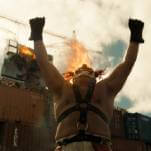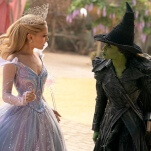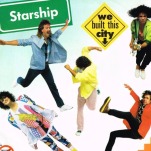M.H. Dunlop: Gilded City: Scandal And Sensation In Turn-Of-The-Century New York

The idea that we are who we pretend to be is none too earthshaking today, but had the upper-class citizens of New York City in the 1890s shared this revelation, they might have been spared a lot of confusion, mania, and panic. Iowa State University literature professor M.H. Dunlop specializes in 19th-century Americana, and her book Gilded City scrapes away America's Gay '90s facade to find a thick layer of sin. Drawing primarily from newspaper accounts, from a time when every daily had multiple editions and the populace read the news compulsively, the author tells of secret orgies, offensively exquisite society balls, rampant cocaine use, a frenzy of consumerism, and recreational cruelty to animals and the poor. Gilded City is essentially a series of essays grouped by theme: sex, class consciousness, art collecting, insanity, and so on. Dunlop packs each essay with telling incidents of decadence and madness, then thoroughly documents the stories by quoting corroborating reports from the Herald, Times, Journal, or other papers of the period. Her diligence sometimes approaches overkill, particularly when she's exhausted the point of one of her stories but continues to pile on more sources. But the gossip adds up to an eye-opening depiction of status-obsessed rich folk degrading themselves and others to keep up with the accelerating pace of fashion in a quickly industrializing world. Two chapters in particular make Dunlop's case: In "Staring At Class," she describes an upper crust so enamored of their fellow elite (especially titled foreigners) that they allow themselves to be robbed blind by impostors. (The phenomenon became an epidemic after the depression of 1893, when the formerly wealthy tried to maintain their social position by ordering goods they couldn't afford.) In the final chapter, "Death In Public," Dunlop relates the day-long execution of a terrified zoo elephant to the inability of late-19th-century New Yorkers to acknowledge their discomfort with the exotic and animalistic. In spite of the popularity of "slumming"—the rich's nighttime habit of touring tenements and bordellos for sheer sensation, aping and mocking their economic inferiors—in the daylight hours, the symbols of their covert desires were disposed of publicly, and with a pleasure they could barely acknowledge.






































